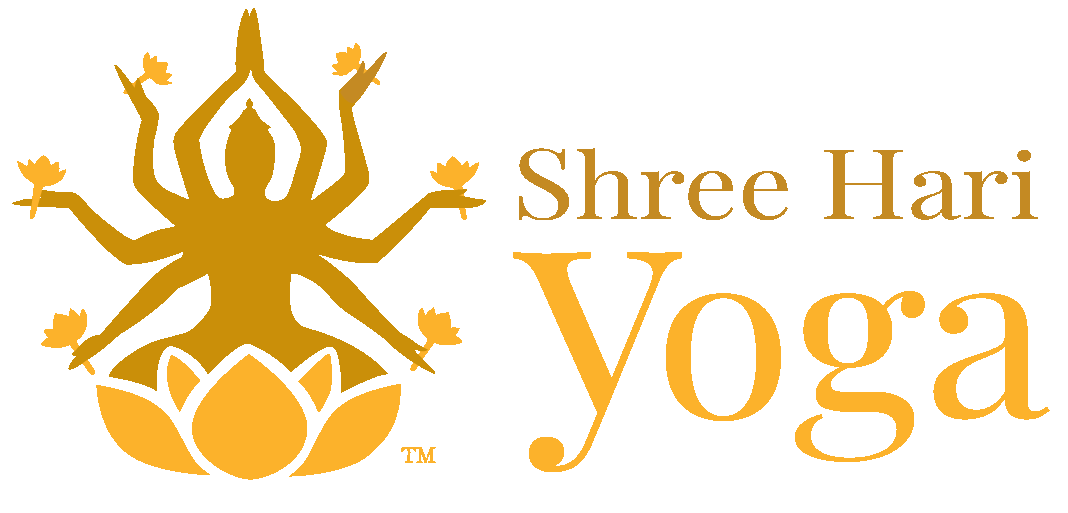The Profound Significance of Attuning to Your Body’s Whispers: The Practice of Listening

Amid the fast-paced intricacies of contemporary existence, where the clamor for productivity and societal expectations take precedence, a vital aspect of our being often goes unnoticed—the innate wisdom harbored within our physical forms. The seemingly straightforward concept of listening to one’s own body carries a depth that transcends its apparent simplicity. This discourse delves into the profound essence of this practice, unearthing the profound reasons behind heeding the gentle cues of our bodies, which is an integral stride toward holistic well-being.
The Intricate Lexicon of the Body
Embedded within us, our bodies possess an extraordinary capacity for communication that transcends the realms of language. Every sensation, every ache, every flutter is a message—a subtle symphony orchestrating a dialogue between our corporeal and mental spheres. Regrettably, in the cacophony of daily existence, these messages often get submerged, fostering a disconnection between our conscious minds and the sentient body.
Listening to your body involves deciphering this nuanced language—a delicate art of attunement. It necessitates creating an internal space where the messages from within are acknowledged and honored, unmarred by judgment or preconceived notions. This practice’s impact is not confined to physical health; it unfurls a profound layer of self-awareness that transcends the surface of our beings.
-
WHY LISTN TO YOUR BODY
Health Awareness: Your body often sends signals when something is not quite right. By paying attention to these signals, you can catch potential health issues early, leading to better outcomes and quicker treatment.
- Prevent Overexertion or Injury: Pushing yourself too hard physically can lead to injuries or burnout. Listening to your body’s cues can help you avoid overexertion and prevent injuries caused by pushing beyond your limits.
- Balanced Lifestyle: Your body often knows when it’s time to rest, eat, or engage in physical activity. Listening to these cues can help you maintain a more balanced lifestyle and avoid the negative effects of neglecting your body’s needs.
- Mind-Body Connection: Listening to your body can strengthen the connection between your mind and body. Being attuned to your body’s sensations can help you become more mindful and present in your daily life.
- Digestive Health: Paying attention to how your body reacts to different foods can help you identify sensitivities or allergies. This can lead to improved digestive health and overall well-being.
- Stress Reduction: Physical sensations often accompany emotions. By recognizing how your body responds to stress, anxiety, or other emotions, you can take steps to manage your emotional well-being more effectively.
- Intuitive Eating: Listening to your body’s hunger and fullness cues can promote a healthier relationship with food. This approach, known as intuitive eating, involves eating when you’re hungry and stopping when you’re satisfied.
- Better Sleep: Understanding your body’s natural sleep patterns and recognizing signs of fatigue can help you establish healthier sleep routines and improve the quality of your sleep.
- Self-Respect: Taking the time to listen to your body signals that you respect and care for yourself. This self-respect can lead to improved self-esteem and a more positive self-image.
- Emphasizing Inner Wisdom: Yoga philosophy often emphasizes the idea that your body holds wisdom, and by listening to it, you can tap into that wisdom. Your body knows when it needs rest, when it can push a bit further, and when it requires nourishment.
- Cultivating Non-Judgmental Awareness: Listening to your body without judgment means observing your body’s responses without attaching labels like “good” or “bad.” This attitude of non-judgmental awareness can extend beyond yoga, positively impacting your overall outlook on life.
- Avoiding Ego-Driven Practice: Sometimes, the desire to achieve a certain pose or level of flexibility can be ego-driven. Listening to your body helps you detach from these ego-based goals and engage in yoga for holistic well-being.
- Customizing Your Practice: Each day, your body’s needs may differ due to factors like sleep, stress, and physical condition. Listening to your body allows you to adapt your practice to suit your current state, ensuring that you receive the most benefit from your session.
WAYS OF LISTENING TO YOUR BODY
- Acknowledging Boundaries: The Reverence of Body
Imagine your body as an intricate cathedral, a marvel of design that cradles your vitality and spirit. Just as you’d tread gently around a delicate structure, extending that same reverence to your body is paramount. Tuning into your body means recognizing its natural boundaries. It’s about knowing when to pause, when to rest, and when to recalibrate.
In the realm of exercise, pushing through pain or ignoring fatigue might lead to injuries that not only harm your body but also undermine your mental resilience. By attuning yourself to your body’s cues, you grant yourself permission to step back when necessary, safeguarding against harm and nurturing a harmonious connection with your very self.
- Holistic Nutritional Nurturing: Savory Sustenance
Nourishment goes beyond sustenance; it involves catering to the intricate needs that enable vibrant living. Listening to your body in the context of nutrition means tuning into the nuanced cues of hunger, savoring the rich spectrum of flavors, and recognizing the sustenance that ignites your energy. This practice invites a balanced relationship with nourishment, one that transcends external dietary rules and aligns with your body’s unique requirements.
- Embracing Emotional Intelligence: The Bodily Symphony of Emotions
Just as physical sensations ripple through your body, emotions manifest as tangible echoes within your vessel. Whether stress, joy, anxiety, or sadness, each emotion triggers a distinct physiological response. Listening to your body in this sphere involves acknowledging these emotional reverberations and allowing them to flow freely. This fusion of emotional wisdom and bodily mindfulness weaves a comprehensive understanding of your inner landscape.
- The Symphony of Equilibrium: Dance of Rhythms
Your body, like an orchestra, performs a symphony of rhythms—circadian cycles, hormonal dances, and the innate cadence of natural processes. Attuning to your body means honoring these intricate rhythms. Fatigue signals the need for essential rest, while imbalances might manifest as physical discomfort or emotional turbulence. By deciphering these subtle cues, you embark on a journey toward restoration and equilibrium.
- Unveiling Inner Intuition: Wisdom Within
Listening to your body unveils more than physical sensations; it opens a gateway to your intuitive compass. Quieting the external noise and turning inward unlocks a wellspring of insight. This inner guidance transforms into a guiding light, steering your decisions and shaping your path in alignment with your authentic self.
- Fusion of Spirit and Vessel: Yoga’s Harmonious Melody
In the realm of yoga, listening to your body isn’t merely a suggestion; it’s a symphony of connection between your physical form and your spirit. Just as a maestro guides an orchestra, you become the conductor of your practice, orchestrating movements that honor your body’s needs and limitations. Through this harmony, you transcend the limitations of your physical self and step into a realm of mindful exploration, self-acceptance, and holistic well-being.
- Embrace Your Unique Flow: A Dance Beyond Competition
Yoga transcends the arena of competition, inviting you to waltz to the rhythm of your own essence. As you tune into your body’s whispers, the urge to compare yourself with others gracefully fades away. This departure from rivalry nurtures the blossoming of self-acceptance and an embrace of your practice as a personal odyssey.
- Riding the Energy Waves: Dance of Vitality
Picture your energy as an ever-changing tide, flowing with its own currents. Some days, you might surf atop vibrant waves of energy and flexibility, while on others, you might navigate through gentle ripples or rest in tranquil stillness. When you attune to your body’s ebbs and flows, you seamlessly tailor your practice to your present energy landscape. This mindful adaptation safeguards against overexertion and anchors you in the present moment.
- Ageless Wisdom, Dynamic Adjustment: Sculpting Your Practice
Life’s chapters bring evolution, and your body’s needs evolve with time. Like a skilled artisan, listening to your body allows you to mold poses and movements to harmonize with your age and well-being. Whether gracefully aging or managing specific health considerations, this adaptive approach ensures your practice is a sanctuary of well-being.
- Love Letters to Your Body: The Art of Self-Care
Yoga is a canvas for self-love and nurturing. Imagine your body as a cherished garden, and the act of listening to its whispers is akin to tending to delicate blooms. Each sensation is a love note, and by heeding them, you craft a symphony of self-care. This practice becomes a sanctuary where you honor your body’s needs with tender devotion.
- Breathing as a Sacred Anthem: Dance of Vital Essence
In the grand orchestra of yoga, breath takes center stage as a sacred anthem. It’s the thread that weaves through each movement, a reminder of your intimate connection with life’s force. Listening to your body’s breath patterns transforms your practice into a mindful choreography, where each inhale and exhale guides your motion. This sublime synergy enhances relaxation, hones your focus, and orchestrates the symphony of prana, that vital river of energy, within your very being.
Conclusion
In a world where the allure of busyness and the pursuit of external validation hold sway, the art of listening to your body emerges as an act of defiance—an assertion of your intrinsic worthiness. This practice engineers a profound rapport with yourself, a rapport that bolsters not only your physical well-being but also your emotional equilibrium and spiritual maturation.
Remember, the path of heeding your body’s whispers isn’t a destination but a perpetual journey. It thrives on patience and self-compassion. Amid the gentle murmurs of your body, you’ll encounter the wisdom you seek—a wisdom that has always resided within, awaiting the moment you choose to listen and resonate with the symphony of your being.
Join Shree Hari Yoga for an exhaustive self-awareness and self-care workshops in yoga that promote your holistic development.
FAQs:
- How do I distinguish between discomfort and pain during yoga?
Discomfort might arise as your body stretches and works, but it shouldn’t be sharp or unbearable. Pain is a signal that something is wrong, and you should immediately ease out of the pose causing it.
- Should I push through challenges or back off when my body resists a pose?
It’s important to challenge yourself, but not to the point of strain or pain. If a pose feels uncomfortable but manageable, stay with it. If it’s causing pain or extreme discomfort, back off and modify as needed.
- What if I can’t do a pose that others in the class can do?
Each person’s body is unique. Avoid comparing yourself to others. Focus on your own progress and what feels right for your body. Use props or modify poses if necessary.
